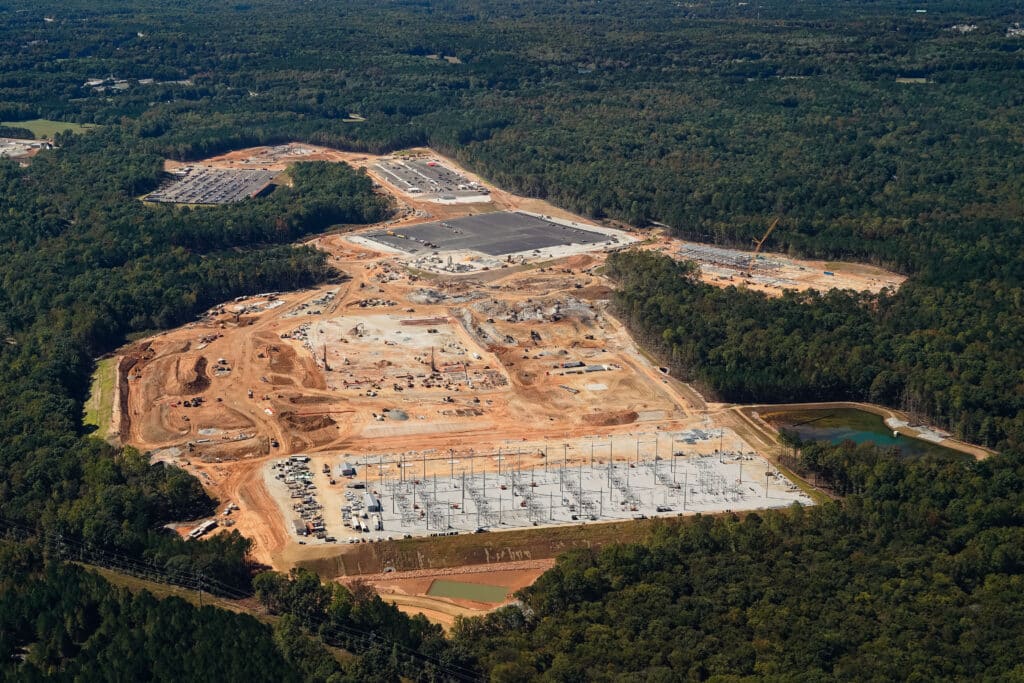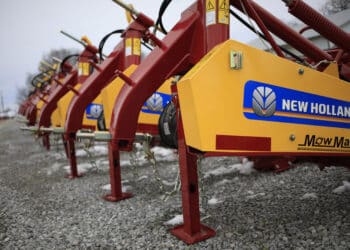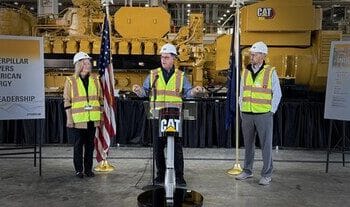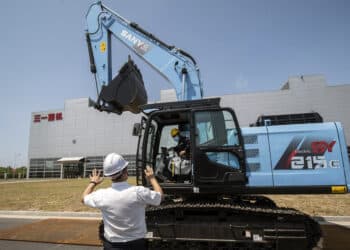Lenders, OEMs, rental houses capitalize on data center boom
Equipment financing key as centers create 1,700 construction jobs
A data center development boom is creating significant opportunities for construction equipment lenders, dealers, rental houses and OEMs.
Data center construction is expected to grow 15% year over year in 2025 to a record 10 gigawatts, topping last year’s record of 7 gigawatts, according to real estate brokerage JLL. Capital spending for data center developments is projected to surpass $250 billion by 2030, according to business intelligence firm McKinsey.
Data centers house computer systems that support AI, cloud computing and other digital applications. Data center construction is a rapidly expanding segment for equipment financiers due to increased consumer demand in the digital marketplace, Jody Ray, relationship manager at Chicago-based BMO Bank North America, told Equipment Finance News.
“When you snap a pic and store it in the cloud, when you place an internet order for anything delivered to your home, when you stream a movie, just about anything you do in your day-to-day life now requires data and computing power to achieve not only what you want to do, but even the things you must do,” he said.
Strategies to capitalize
As data centers create a robust market subset, OEMs are reaping the benefits, Lonnie Fritz, senior market professional for construction industries at Caterpillar, told EFN.
“Within this growing industry, it has also increased the need for machines and power generation products,” he said. “While Caterpillar was built on the legacy of our track-type tractors, excavators and other products, we would be remiss if we didn’t talk about power generation with our wide range of generator sets.
… And beyond the machines and power systems, [data centers] provide an opportunity with our technology, parts and service offerings to really leverage those out to customers.”
— Lonnie Fritz, senior market professional, Caterpillar
Caterpillar makes sure dealers’ power systems divisions have the resources and expertise to support its power generation product lineup, Fritz said.
Late-model Caterpillar power generators with more than 1,500 kilowatts typically cost more than $400,000, according to online listings at digital equipment dealer Boom & Bucket.
Rental houses zero in
Meanwhile, large rental houses are also working to capitalize on this growing market. Sunbelt Rentals’ mission critical team, for example, follows these projects throughout the country, “including new construction, retrofit and facility maintenance work,” Chris Hill, strategic customer representative of mission critical, told EFN.
More data center projects are being built on large tracts in rural areas, driving demand for earthmoving equipment, he said.
“As a company, we are expanding our earthmoving locations to target companies that focus on site clearing, site utilities, etc.,” Hill said. “Dozers, excavators and dump trucks are all examples of equipment needed.”
The average data center ranges from 20,000 to 100,000 square feet, although many exceed 1 million square feet, according to IBM.

New borrowers emerge
Building a typical data center creates nearly 1,700 construction jobs and adds about $243.5 million to the local economy, according to cloud security platform Upwind.
One key difference between constructing data centers and conventional projects is the “complexity of contractor involvement,” Sunbelt’s Hill said.
“Unlike conventional construction projects with a single general contractor overseeing all work, data center builds often have multiple GCs managing different aspects,” he said. “These include site utilities, shell construction and interior fit-out, each with their own subcontractors.”
As new borrowers emerge because of data center developments, lenders are supporting their equipment financing needs “but with the same prudent lending standards we hold ourselves to,” BMO’s Ray said.
“We want to assist every company we can with their banking and borrowing needs, but we underwrite the loan using the same policies we have for borrowers in any industry,” he said.
Caterpillar’s Fritz similarly said financing is “business as usual” for data center construction equipment, but these projects are yielding more opportunities for lenders due to the volume of equipment needed.
“With the increase in the demand for equipment, it does increase the potential for those financing vehicles and leasing terms for contractors looking to preserve the capital they have on hand or needing the financial support to bridge that gap,” he said.
The third annual Equipment Finance Connect at the JW Marriott Nashville in Nashville, Tenn., on May 14-15, 2025, is the only event that brings together equipment dealers and lenders to share insights, attend discussions on crucial industry topics and network with peers. Learn more about the event and register here.









